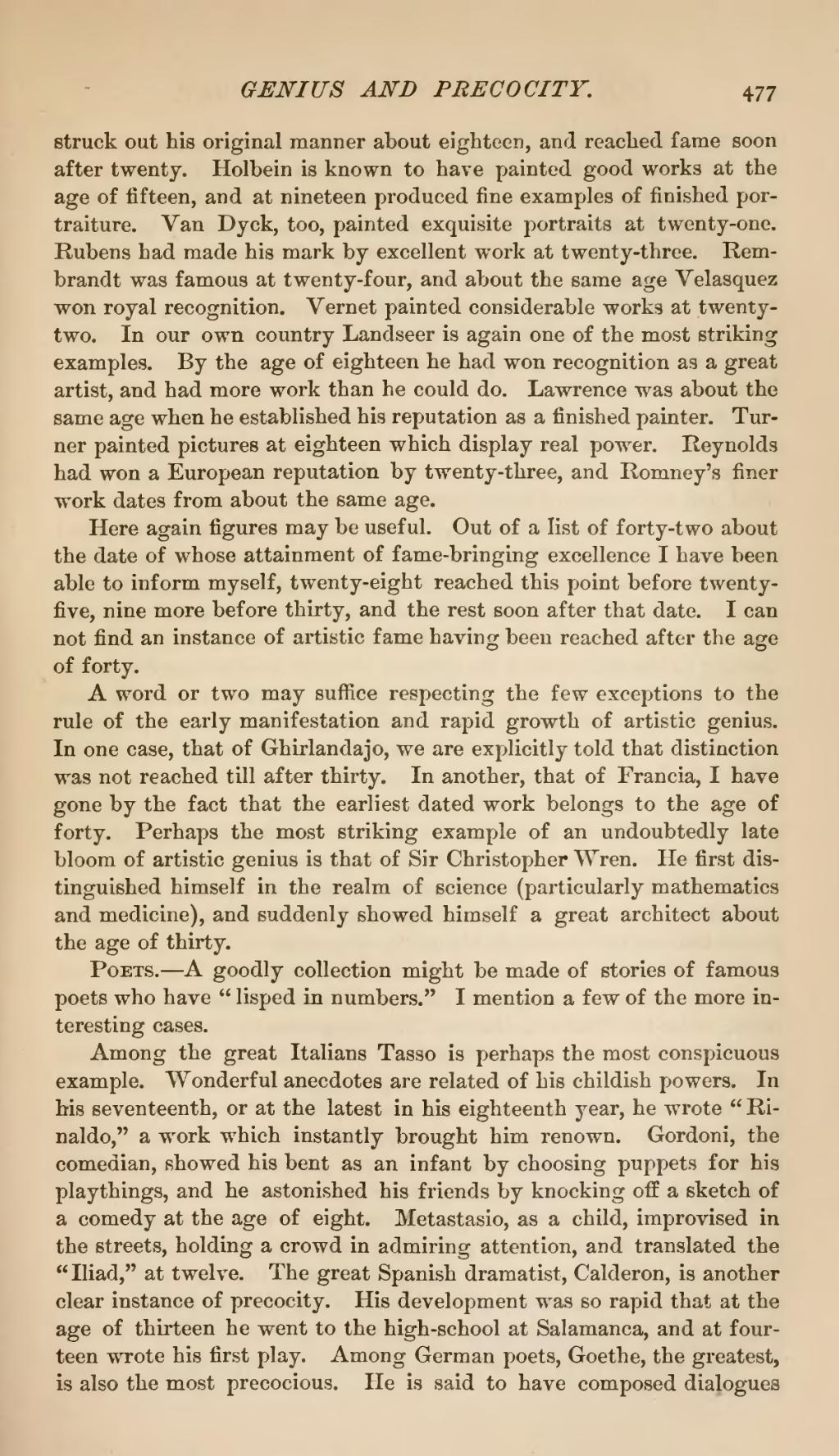struck out his original manner about eighteen, and reached fame soon after twenty. Holbein is known to have painted good works at the age of fifteen, and at nineteen produced fine examples of finished portraiture. Van Dyck, too, painted exquisite portraits at twenty-one. Rubens had made his mark by excellent work at twenty-three. Rembrandt was famous at twenty-four, and about the same age Velasquez won royal recognition. Vernet painted considerable works at twenty-two. In our own country Landseer is again one of the most striking examples. By the age of eighteen he had won recognition as a great artist, and had more work than he could do. Lawrence was about the same age when he established his reputation as a finished painter. Turner painted pictures at eighteen which display real power. Reynolds had won a European reputation by twenty-three, and Romney's finer work dates from about the same age.
Here again figures may be useful. Out of a list of forty-two about the date of whose attainment of fame-bringing excellence I have been able to inform myself, twenty-eight reached this point before twenty-five, nine more before thirty, and the rest soon after that date. I can not find an instance of artistic fame having been reached after the age of forty.
A word or two may suffice respecting the few exceptions to the rule of the early manifestation and rapid growth of artistic genius. In one case, that of Ghirlandajo, we are explicitly told that distinction was not reached till after thirty. In another, that of Francia, I have gone by the fact that the earliest dated work belongs to the age of forty. Perhaps the most striking example of an undoubtedly late bloom of artistic genius is that of Sir Christopher Wren. He first distinguished himself in the realm of science (particularly mathematics and medicine), and suddenly showed himself a great architect about the age of thirty.
Poets.—A goodly collection might be made of stories of famous poets who have "lisped in numbers." I mention a few of the more interesting cases.
Among the great Italians Tasso is perhaps the most conspicuous example. Wonderful anecdotes are related of his childish powers. In his seventeenth, or at the latest in his eighteenth year, he wrote "Rinaldo," a work which instantly brought him renown. Gordoni, the comedian, showed his bent as an infant by choosing puppets for his playthings, and he astonished his friends by knocking off a sketch of a comedy at the age of eight. Metastasio, as a child, improvised in the streets, holding a crowd in admiring attention, and translated the "Iliad," at twelve. The great Spanish dramatist, Calderon, is another clear instance of precocity. His development was so rapid that at the age of thirteen he went to the high-school at Salamanca, and at fourteen wrote his first play. Among German poets, Goethe, the greatest, is also the most precocious. He is said to have composed dialogues
